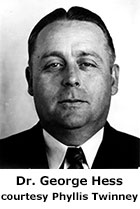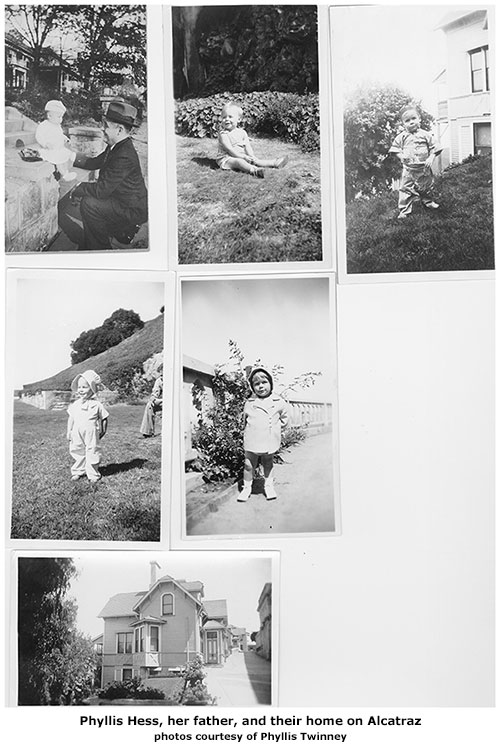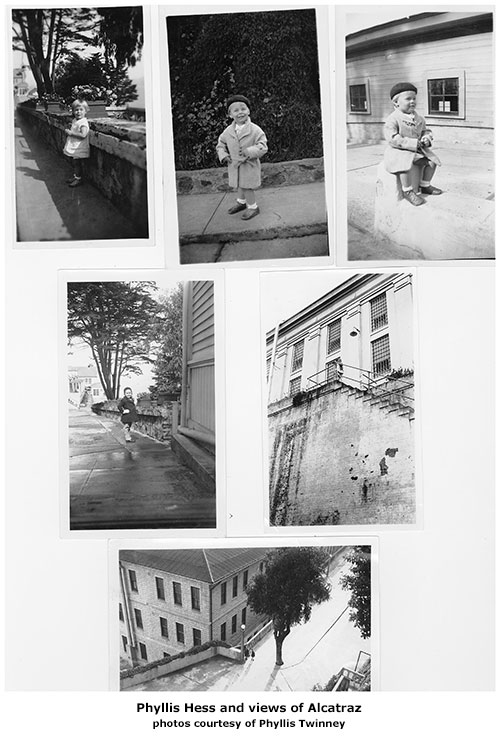THE ALCATRAZ INTERVIEWS
Daughter of Al Capone’s Doctor
Phyllis Hess (Twinney) lived on Alcatraz Island because her father was the Chief Medical Officer. She lived on the island from 1934–1939.

1.
When did you live on the island?
From 1934 through 1939. Like Moose, in Al Capone Does My Homework, I lived on Officer’s Row. Our Alcatraz home was built in the late 1800’s. It had Victorian architecture and dust and mold from the same era. I loved living there. The bells, whistles and fog horns were just part of comforting normal life.
2.
What was your father’s job?
 My father, Dr. George Hess, was the Chief Medical Officer on the island. We arrived on the island to help supervise the retrofitting of the prison hospital and stayed through the first few years of operation.
My father, Dr. George Hess, was the Chief Medical Officer on the island. We arrived on the island to help supervise the retrofitting of the prison hospital and stayed through the first few years of operation.
3.
Did you have any contact with the prisoners?
Alcatraz was just like any street in any town in America. The only difference was we had high security convicts. Did I see them? Yes. Did I have direct contact with them? No.
4.
Did you ever meet a pass man?
If by pass men, you mean the convict servants in the warden’s house, no, I never met them. My father was not in favor of Warden Johnston having prisoners in white jackets doing servant duty in his house. Dad hired a housekeeper for us. She was Irish, her name was Lydia, and she came over on the first boat each morning. She taught me the “right way” to eat oatmeal; she had lots of “right ways” to do things.
5.
What did your father think of Al Capone?
Al Capone was my father’s specially assigned patient. They met in Atlanta where Capone was held before Alcatraz. My father was aware Al was a highly demanding and very sick man. That only made my father more sensitive to Al’s plight.
6.
What did Capone think of your Father?
Al liked the bedside manner of my father and his assistant, Nurse Ping. (He threw hissy fits with the other medical staff.) With Al’s medical condition, he was choosey as to who he would let touch him, which meant my father got stuck with him from Atlanta to Alcatraz to Terminal Island. It all boiled down to “Let Dr. Hess handle him.”
7.
Did you ever receive a gift from Al Capone?
Al Capone sent an occasional present via my father, who was Al’s doctor. Once he wrote a piece of music for me. He had heard I was born in Ohio, so he wrote a song called: “Beautiful Ohio” and signed it “for Doctor Hess’ little daughter from Al Capone.”

8.
What else can you tell us about Capone?
The best story about Capone is that Dad and Nurse Charles Ping and a guard took Al by train back to his family in Florida. This trip was supposed to be top secret. Walter Winchell, the radio gossip columnist, broadcast the exact train, route and layover. No one to this day knows who leaked this information to Winchell. Since my dad did not have a radio, he was shocked to see the press out in full force when the train pulled into St. Louis. Don’t laugh, but it was Al who was the dodgiest of them all. He suggested that he and my father be handcuffed while Charlie and the guard put their guns (dismantled) under the seats, blast out onto the platform and bash cameras and create a distraction. Dad and Al hightailed it off the other side and ran, shackled together, to the next train for Al to get home.
9.
What was the scariest place on the island?
There were no scary places for me on Alcatraz. The only person who scared the liver out of me was the Warden.
10.
What do you miss most about Alcatraz?
I miss Alcatraz because there was such enormous good will among the families on the island. We understood our rules. They made sense. It’s the only place I’ve ever lived where I knew exactly what I was supposed to do. Life has been á la carte ever since.

Since Alcatraz, Phyllis has taught elementary school in four states; been an assistant in biology at Wayne State University in Detroit; and an editor for the Michigan Psychiatric Society.
Interviewed by Gennifer Choldenko by email in March 2013

